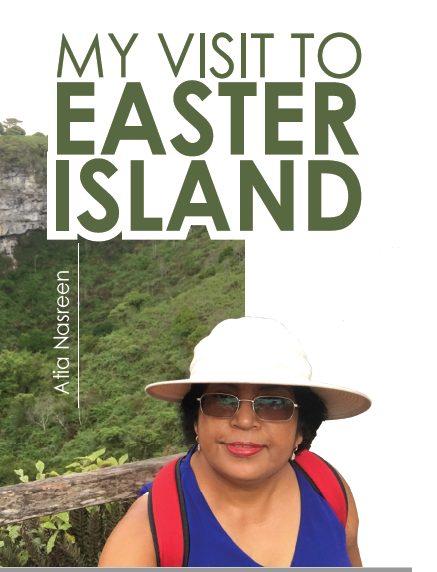
Easter Island_ a place so remote from the rest of the world, in the middle of nowhere yet so fascinating, so interesting and so amazing. I first read about it in the National Geographic magazine many year’s ago and wanted to visit the place. Finally, that time came. In my recent world tour, I had the opportunity to go there. I flew to Easter Island from Galapagos Island. It was a long trip. Although both the islands were in the South pacific, there were no direct flights between the two places. From the Galápagos Islands I had to fly to Quito, the capital of Equador and then to Lima and then to Santiago and finally to Easter Island. The Island is part of Chile and 2500 km away from it. Easter Island is one of the most remote inhabited islands in the world.
It was a journey of 38 hours and I enjoyed every moment of it. Every place was so different and so fascinating. Travelling in South America was definitely a great experience.
The local name of Easter Island, also known as Isla Pascua in Spanish, is Rapa Nui. We landed just before sunset on the sea side Airport. It was so beautiful to look at the sunset. After coming out of the Airport I took a taxi to my hotel. It was a short drive of about 10 minutes. The place gave me a flavour of Polynesian culture which I am quite familiar with. I have lived and worked in Papua New Guinea, I took a cruise in the South Pacific for nine days and went on several shore tours including one in Vanuatu. I have also travelled in Hawaii. I simply love that culture.
I chose my hotel online. It was beautiful, just the way I like. It gave me a flavour of the movie Swiss Family Robinson and so typical of Polynesian culture. At the reception I was greeted by the receptionist. After settling in my room, I came back to the reception to enjoy my welcome tea. It was beautifully served, and I enjoyed it.
The Hotel receptionist helped me in organizing my tours for the next three days. My first day of the tour was going to start the next day in the afternoon which suited me very well. The next morning, after breakfast, I went around the hotel and took photos. It was so beautiful, lush green with beautiful flowers around. It was a unique experience.
I went for stroll around the hotel. The beach was just two minutes’ walk and I could see it from my hotel. I walked towards the opposite side. It was a very neat and clean town, in fact it was a place spotlessly clean. I stopped at a café for my mid-morning coffee, enjoying the beautiful place.
The history of Easter Island always fascinated me. When I first saw the pictures of those giant statues in a row in an island, in the middle of nowhere, I wanted to know more about them. The pictures of those extant monumental statues called “Moai” statues, nearly 1000 of them, created by the early Rapa Nui people was so fascinating. It is something so unique, I had to see it.
It is believed that the Polynesian inhabitants arrived on Easter Island sometime near 1200 AD. A small group of Polynesians crossed the world’s great ocean, guided by stars, in search of a new land. A piece of new land was found and they named their new home, Te Pito o te Henua, “The Navel of the World”. Initially they were successful in creating a thriving, industrious culture. They built a civilisation of art, capable of carving, building gigantic monolith statues using their hands and sharp stones. It was a culture full of achievements, intellect, music and legends. Rapa Nui people respect their heritage and up until today they have passed on the stories of the disembarkation of King Hotu Matu at the beach of Anakena lifetimes ago.
The tools that were used in carving the Moai statues are called Toki, simple handheld chisels. The highest kind of Toki were made of Hawaiite, which is the hardest kind of rock found in Easter Island. It was available only in the Northern part of Rapa Nui and its scarcity made it highly valuable in ancient times.
However, land clearing and introduction of Polynesian rats led to gradual deforestation.
Europeans arrived in Easter Island in 1722. The island population at that time was estimated to be 2000-3000.
By 1860s, the island’s population decreased to 111natitive inhabitants. Some of the possible causes were European diseases, Peruvian slave raiding expeditions and emigration to other islands, e.g. Tahiti.
In 1995, UNESCO named Easter Island a World Heritage Site, with much of the island protected within Rapa Nui National Park.
After a quick lunch, I was picked up from my hotel. We were about 20 in the group, most of them were Spanish speaking. We were about 5 in the English speaking group. The first part of our tour was to see several lava tubes and craters. After getting down from the bus we started walking. It was an extremely challenging walk. We walked along muddy, slippery path for more than half an hour. When we reached the lava tube it was even more challenging. We had to go down the rocks scattered in all directions, muddy and slippery. The people in our group were wonderful and extended their helping hand whenever necessary and I appreciated it. The last thing I wanted was a sprained ankle. Going from one lava tube to another was equally challenging.
The place was full of Guava trees and many trees were 1m high with fruits in them. I picked up one for tasting. It was nice.
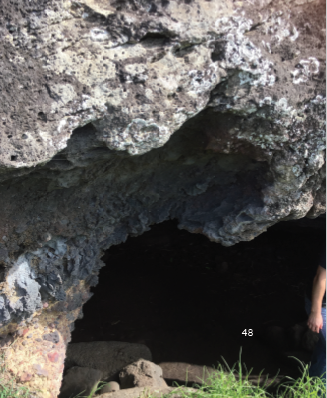
The lava tubes were very fascinating to look at. At many places they had flowing water inside. Easter Island is a volcanic Island and these types of lava tubes are very common in volcanic islands. I have seen them in Galapagos Island as well. Many extinct lava tubes and caves make up the foundations of Easter Island. When volcanoes were active, the flow of underground lava formed the tubes and when it met the sea the tubes turned into caves. The main three volcanoes that gave Easter Island its triangular shape are Rano Kao, Poike and Terevaka. They are all dormant now.
After seeing all the lava tubes and craters we were taken to an archaeological site to see the Moai statues. The name of the place is called Ahu a Khivi. Its location was unique, mainly because of its astronomical location. These seven Moai statues were different from the rest of some 887 statues in the way that they face the Ocean. The rest of them, which we were going to see tomorrow, face towards the land. It was raining lightly so I took photos from under a tree.
From there we were taken to a place which was surrounded by dormant volcanoes. I loved the clouds in front of the hills. We climbed up the hill and from the top we could see the beautiful rainbow on one side and the ocean on the other side. It was spectacular.
Next morning, I was picked up from my hotel by our tour guide. We travelled by bus and came to Ahu Tongariki, where the Moai statues were standing. It was an absolutely mind-boggling experience. The place was just next to the beach. The weather was perfect, beautiful sunny day, the sea breeze was so relaxing. I felt overwhelmed with emotion. I have travelled thousands of kilometres to see this. I have read so much about them and always thought of going there to see this. I had an awesome feeling when I stood in front of the statues.
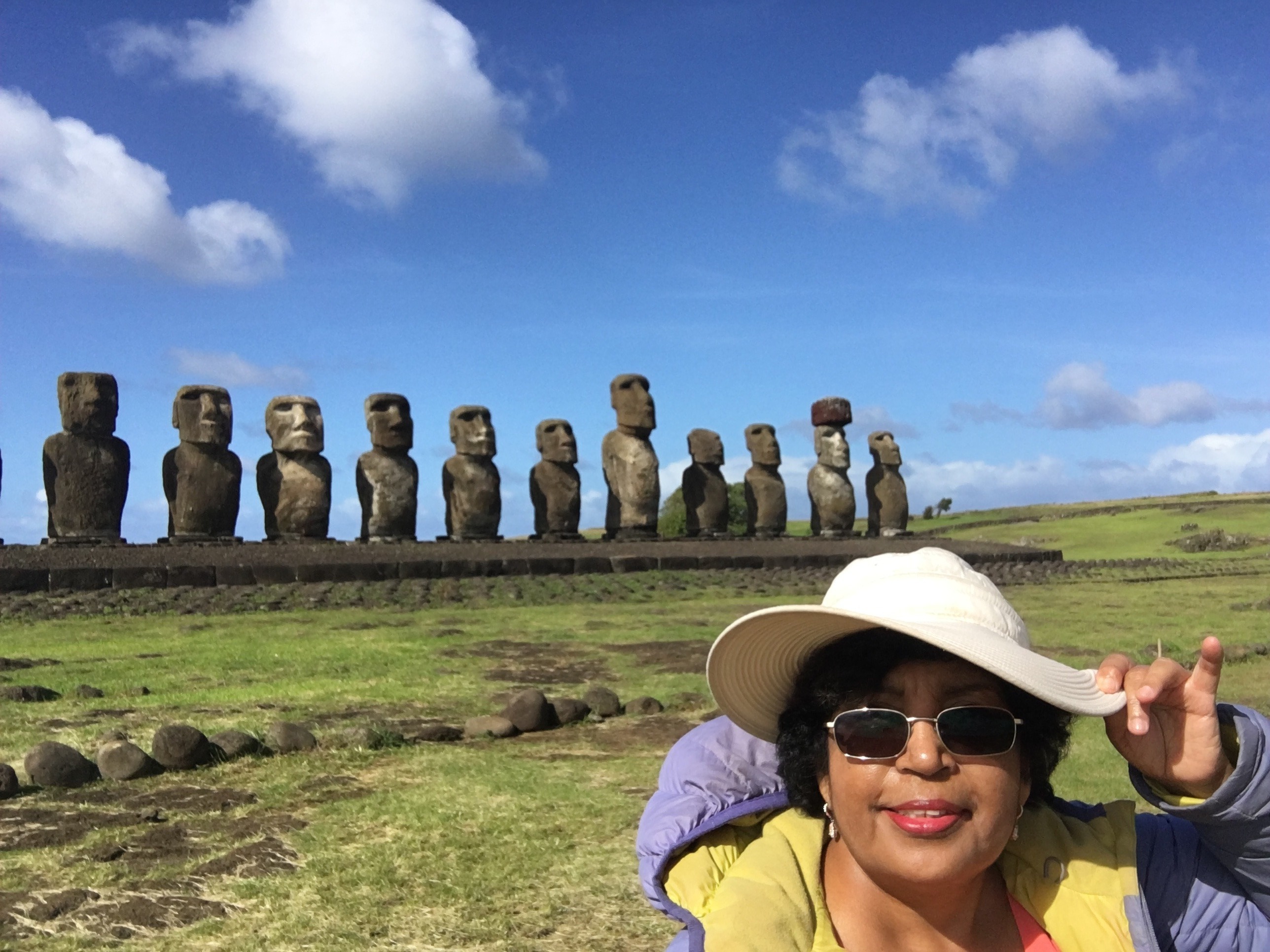
15 Moai statues were standing in a row with their back towards the ocean meaning that they are protecting the land. The largest one was 12m high, weighing 90 tonnes. They were built in the 9th century. There were 887 Moai statues around the island. It was mind boggling to think how they built them at that time.
After seeing everything I sat down on an elevated rock at a distance, looking at the statues and the ocean from a distance and was thinking of the time when they were built, how was the world like at that time, how was the life like at that time.
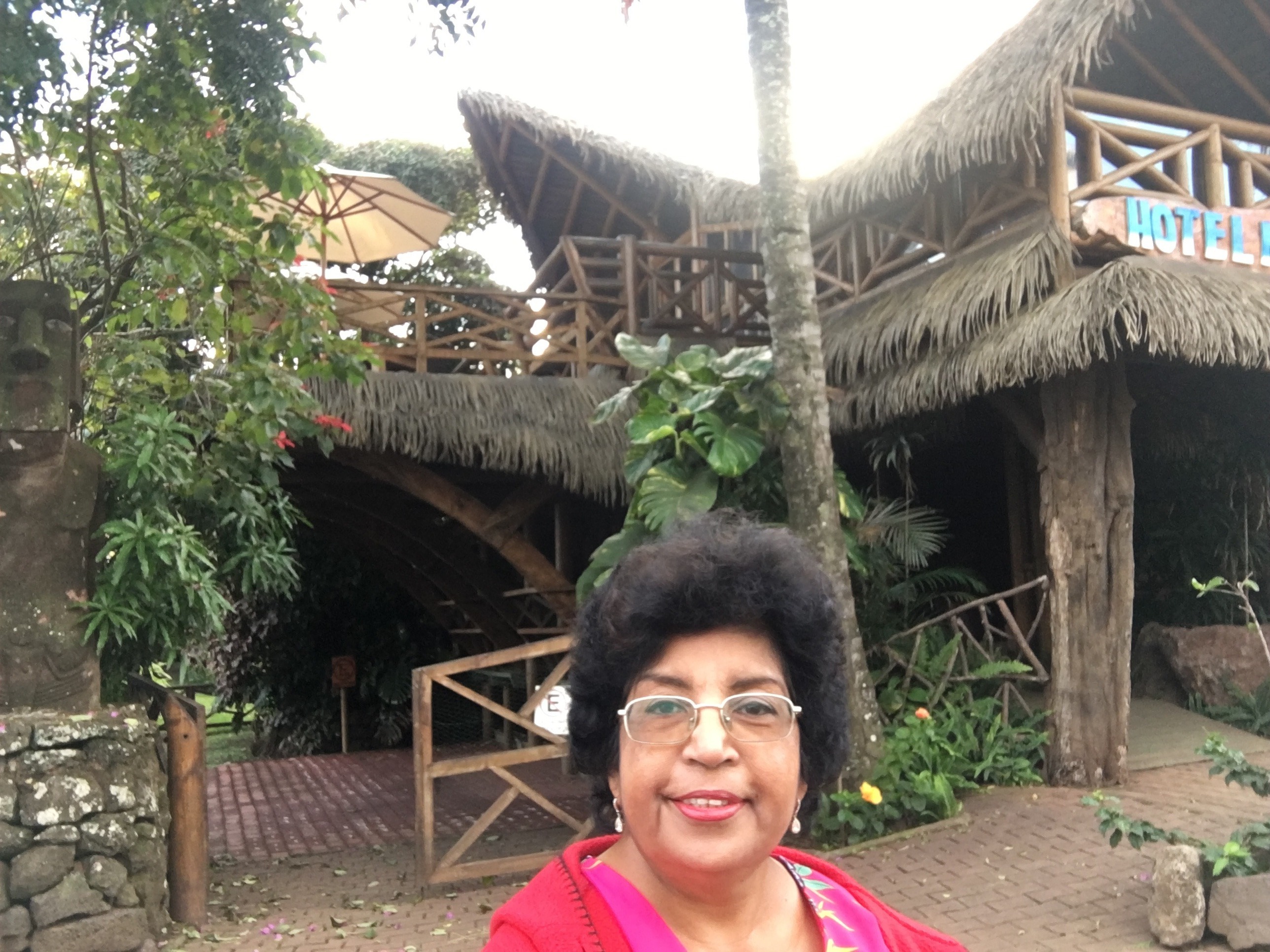
On my third of touring we were first taken to another archaeological site of Rapa Nui. It was a beautiful day, sunny with beautiful blue sky with patches of white cloud. It was nice and cool. We climbed up the mountain, going round it, rocks were lying around which we used as steps. We saw many Moai statues around. Our tour guide explained the complex method used to create these incredible figures. We also went to Rano Raraku where the ancient islanders carved the Moai before transporting them to their ahus (platforms). We went up and down the mountains with Moai curved on the mountain Rocks in the lying position. Some Moai statues were left unfinished and were wasted. It was an amazing sight.
We were taken to another archaeological site called Te Pito Kura, located on the North Shore of the island. It was a beautiful drive along the coast. Lying face down is the Moai named Paro. This is the largest Moai ever transported from the Rano Raraku and raised on an Ahu. It weighed about 80 tonnes with a height of 10m. In front of his head lies the gigantic pukao (the Head cover) 2m tall weighing 10 tonnes.
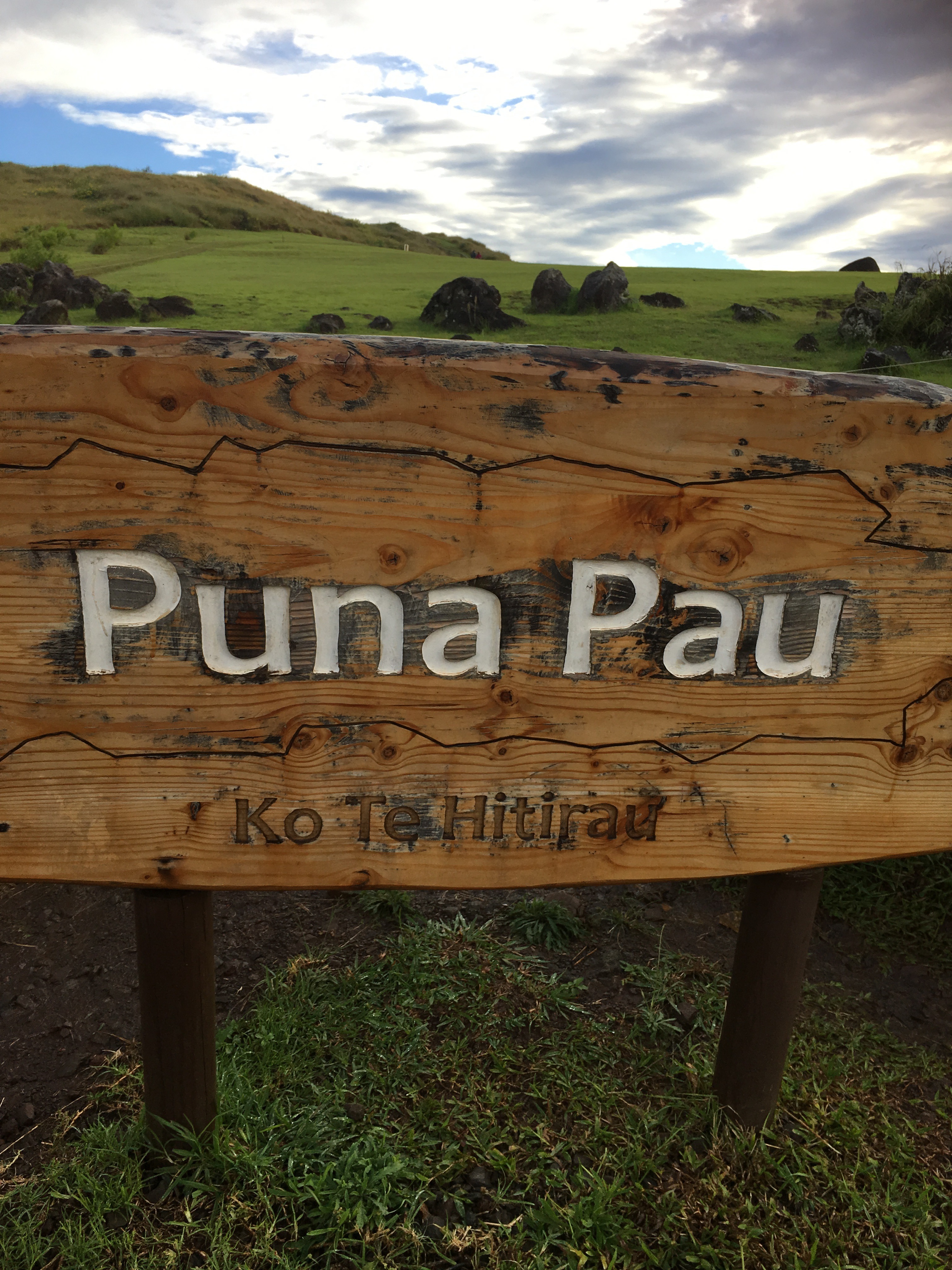
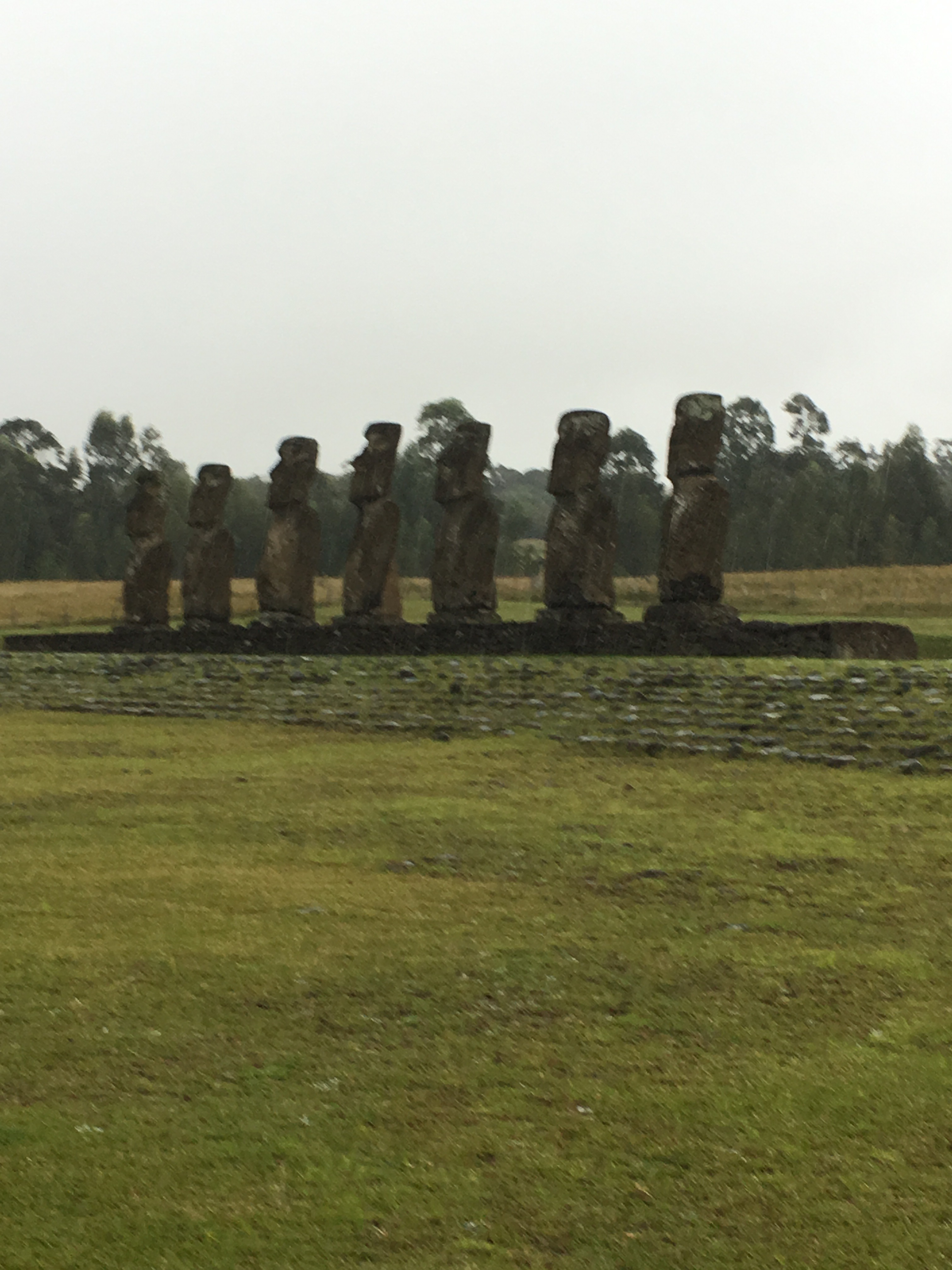
Close to this Moai was a large stone, surrounded by 4 smaller stones serving as seats. According to the legend the large stone was brought by the first King Hotu Matu’a from its native land Hiva. It is said to have magnetic property and possess a special energy. These legends add to the aura of mystery that surrounds Easter Island.
Surrounding the place, we saw old dwellings made of stones used by Rapa Nui people. It was very interesting to see how cleverly those stone houses were built making room for light and air.
It was my last day at Easter Island. I bought a ticket to attend a cultural show. Music is an integral part of me and wherever I go, I attend traditional music and dance program. This time, it was no different. The place was only 10 minutes’ walk from my hotel. The whole place was bustling with tourists. A feeling of happiness overcame me. The show was wonderful, very similar to what I have seen at the Polynesian Cultural centre in Hawaii. With the wonderful music and dance I was absolutely swept away.
After spending three memorable and happy days in Easter island, it was time to say goodbye to Easter Island (Rapa Nui). I am going back with memories that I’ll treasure for the rest of my life.